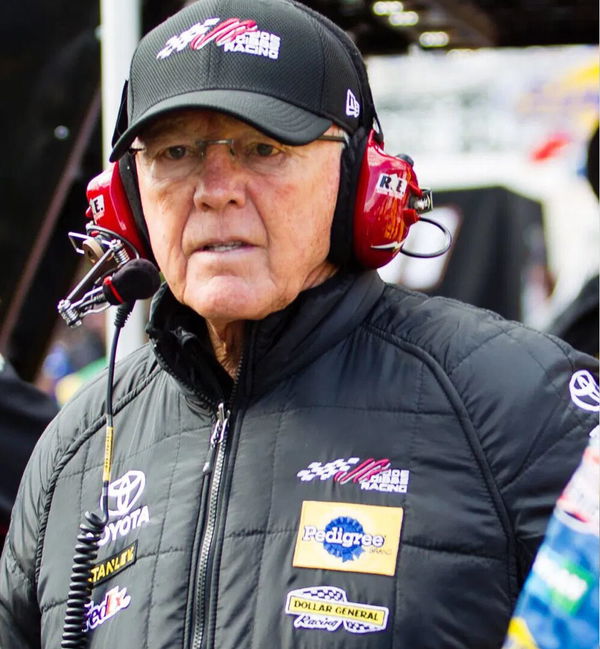

It’s rare in any NASCAR race that we would see it to be devoid of any crashes. Now the question is, how far do these crashes affect the dynamics on the racetrack? That’s where the real drama lies.
Cook Out Clash at Bowman Gray Stadium, on February 2, 2025, was one of the most anticipated season openers; however, a major on-track incident that resulted in finger-pointing by teams and their driver sent the event off on a divisive note, which entangled three teams: Spire Motorsports, Joe Gibbs Racing, and Hendrick Motorsports.
ADVERTISEMENT
Article continues below this ad
The teams played a blame game to pinpoint the real culprit
A collision, the first of the race, between Carson Hocevar‘s No. 77 Chevrolet Camaro ZL1 of Spire Motorsports and Chase Briscoe‘s No. 19 Toyota Camry TRD of Joe Gibbs Racing spurred a chain reaction that had a lingering impact on some of its race participants- Hendrick Motorsports driver Kyle Larson accompanies with William Byron.
Immediate post-collision team communications on NASCAR captured raw emotion and different perspectives:
Tyler Monn, Kyle Larson’s spotter, said, “The 77 squeezed down there. The hole wasn’t there. So it was the #77’s fault.”
Luke Lambert, crew chief for Chase Briscoe, shot back, “Obviously, that was all the #19 car.”
William Byron, visibly frustrated, said, “It’s a s**t show back here.”
The incident points out the high stakes of racing in NASCAR, where a split second can result in significant consequences. The two differing opinions illustrate how fault assessment in such incidents is subjective.
What’s your perspective on:
Is the blame game in NASCAR crashes just a distraction from the real issues on the track?
Have an interesting take?

USA Today via Reuters
Feb 19, 2023; Daytona Beach, Florida, USA; NASCAR Cup Series driver Ricky Stenhouse Jr (47) leads Joey Logano (22) on the last lap as Kyle Larson (5) crashes with Travis Pastrana (67) during the Daytona 500 at Daytona International Speedway. Mandatory Credit: Mark J. Rebilas-USA TODAY Sports
For Hendrick Motorsport, the accident was particularly catastrophic. Kyle Larson had driven an excellent race and was handed a 17th-place finish as a result of this collision. William Byron also drifted off the lead lap and finished 18th. He voiced his frustration over the haphazard nature of the race conditions. Spire Motorsports, which wants to establish a foothold in the NASCAR Cup Series, took center stage after Carson Hocevar’s aggressive driving in his No. 77 car has been cited by some as contributing to the fray, bringing to the forefront an examination of its racing style.
Joe Gibbs Racing, with their new driver Chase Briscoe in the No. 19 car, also faced criticism. Luke Lambert’s defense of Briscoe suggests a belief that the fault lay elsewhere, indicating the complexities involved in on-track incidents where multiple cars are in close quarters.
The Cook Out Clash at Bowman Gray Stadium gave quite a bit of an eyeful as regards how unexpected and argumentative things could turn NASCAR racing events into real, bone-headed mistakes. As the season unfolds, it will be interesting to see how these teams and drivers approach their strategies. And now, their interactions are on track to hopefully not repeat such a controversy and be able to focus on achieving their ambitions.
Trending
HMS crew chief praises Chase Elliott’s emphatic Madhouse win
After a tough stretch of seasons marked by injuries and winless droughts, Chase Elliott and his No. 9 team made a resounding statement at Bowman Gray Stadium. The Hendrick Motorsports driver dominated the Cook Out Clash, leading 171 of 200 laps and fending off a late push from Ryan Blaney to capture the checkered flag. While the exhibition race didn’t award points, it was a confidence-boosting victory that reaffirmed Elliott’s status as a top contender.
His longtime crew chief, Alan Gustafson, was quick to praise his driver’s poise and adaptability, especially in the second half of the race. “Chase [Elliot] in the second half of the race was just superb,” Gustafson said. “I think that was because he learned from the first hundred laps. He did an amazing job that second half, putting us in a great position, taking care of his stuff, and yeah, it’s amazing.”
The win wasn’t just about speed—it was about execution, and Elliott showed the patience and precision that define elite drivers. After briefly losing the lead to Denny Hamlin on Lap 96, he regrouped, studied his competition, and retook control on Lap 126, never looking back.
ADVERTISEMENT
Article continues below this ad
“Chase [Elliot] is one of the most talented drivers I’ve ever worked with,” Gustafson added. “He’s got this incredible ability to learn and adapt, and when he’s on his game, there’s no one better.” Blaney, who fought from 23rd to finish second, acknowledged Elliott’s control of the race, quipping, “I’m not going to bulldog into him and get chased out of here with pitchforks.” Meanwhile, Joey Logano, who finished fourth, felt the heat from the passionate fans, saying, “They’re heckling you, saying whatever they want.”
The energy at Bowman Gray, known as “The Madhouse,” was electric, with a sold-out crowd of 17,000 adding to the drama. Elliott thrived in the intense atmosphere, embracing the history and excitement of NASCAR’s return to the legendary short track. “This environment is special,” he said.
“This is a place that has a deep history in NASCAR. I think they deserve this event, truthfully. I hope we didn’t disappoint.” Gustafson echoed that sentiment, emphasizing the significance of the moment. “The fans were incredible,” he said. “They were loud, passionate, and really made it feel like a big event.”
ADVERTISEMENT
Article continues below this ad
With the Clash in the books, Elliott and Gustafson now turn their focus to the season ahead, ready to prove that this win was just the beginning of their resurgence.
ADVERTISEMENT
ADVERTISEMENT
ADVERTISEMENT
ADVERTISEMENT


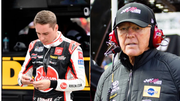
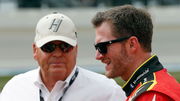
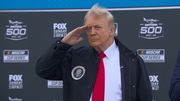

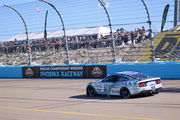
Is the blame game in NASCAR crashes just a distraction from the real issues on the track?